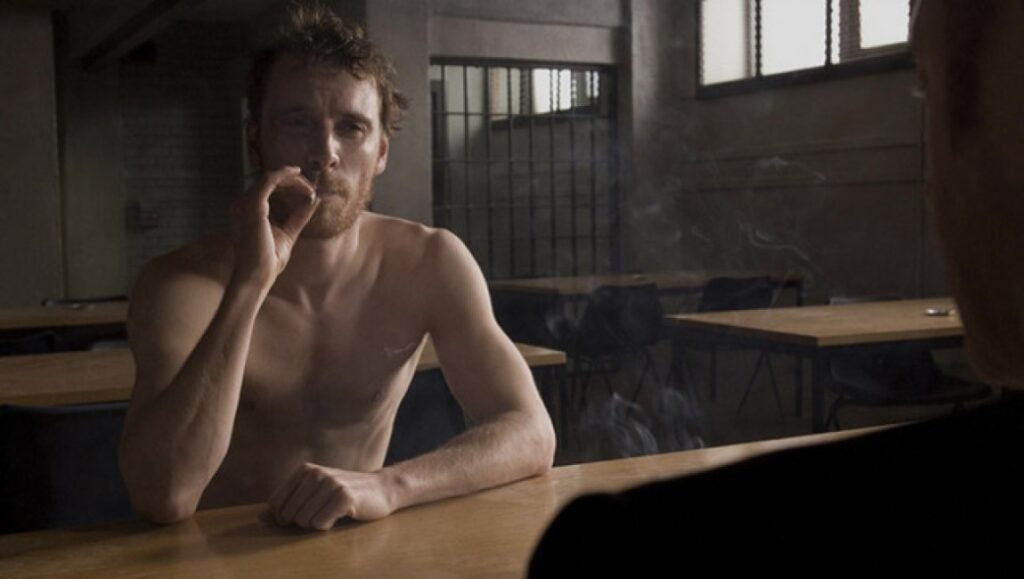“Virtue may be assailed, but never hurt, surprised by unjust force, but not enthralled,” so says John Milton (Comus I. 589), whose words resonate in Hunger, a technically astounding, but thematically and politically ambivalent debut from director Steve McQueen, which exhibits similar themes of honor threatened by injustice. The film depicts the final six weeks in the life of IRA hunger striker Bobby Sands, and is divided into three chapters: first, a realistic rendition of the bleak life of two prisoners; second, a 17-minute conversation between Sands (Michael Fassbender) and his priest (Liam Cunningham) during which the morality of Sands’ proposed hunger strike is questioned; and finally, the chronicle of a moribund Sands as his body succumbs to starvation and death.
The film begins when two convicts—held in Belfast’s Maze prison, their cell walls decorated with excrement and the floor caked with urine—take part in a protest by wearing blankets instead of their prison uniforms. The aim of this defiance is to gain recognition as political prisoners. The guards physically and mentally abuse both inmates, even beating them with their nightsticks in one grizzly scene, but there are sympathetic shots of the guards too, which portray the officers as men burdened by the moral weight of their actions. McQueen also gives us a scene that shows unprovoked IRA violence, introducing the notion that some of the IRA prisoners in Maze are merely criminals who deserve punishment. Due to this, the first segment of Hunger registers as a balanced history lesson; there’s no noticeable political agenda behind the camera, just the desire to tell a story. Encompassing roughly 40 minutes, this part of the film is dark, but it draws the viewer in completely, and the graphic journey McQueen takes his prisoners on recalls other iconic, similarly visceral struggles: that of Dave Bowman in 2001: A Space Odyssey and Fred Madison in Lost Highway.
The film then shifts from an intense visual experience to something more like a stage drama, a change those troubled by the first segment might welcome. In this second section, Sands and the prison’s chaplain, Father Moran (Cunningham), discuss the moral and political implications of the prisoner’s threatened hunger strike. The encounter is masterfully shot, as cigarette smoke creates a screen between the two while dark shadows veil their outlines. “You call it suicide, I call it martyrdom,” Sands tells the priest, and through their dialogue we gain insight into Sands’ way of thinking. Also, the two nuanced performances in this one scene are more than convincing — they’re awards worthy. Playing men whose lives are so hard for us to relate to, both actors are able to profoundly connect us with their characters’ pain.
In the final chapter, McQueen unflinchingly shows us the physical demise of Bobby Sands: the bedsores and life-consuming exhaustion which leave him so weak that he can barely keep his eyes open. This finale is very stark, giving us grotesquery after grotesquery, and effectively conveying Sands’ deterioration, but we know that these images cannot reveal the dying man’s emotional agony. Thus begins the film’s downfall: The preference of visual communication over dialogue, which does not always advance the story or enhance our investment in this character. The final sequence demonstrates this, as McQueen shows a flock of crows flying into the gray sky; a contrived metaphor for Sands’ passing, and an aesthetic that is tonally at odds with the rest of the film.


Comments are closed.